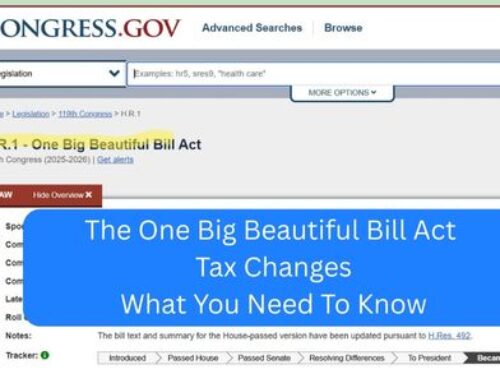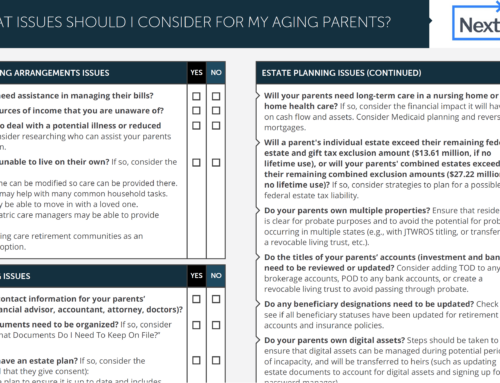SBP Open Season: Should You Opt In or Opt Out?
You often don’t get a second chance on your SBP decision, but this year’s NDAA provides that rare opportunity. So what are the SBP Open Season options and how should you think about it?
This is part 4 of our series on the Survivor Benefit Plan (SBP). SBP Open Season gives military retirees a rare opportunity to opt-in or opt-out of SBP coverage in certain cases. Links below will take you to parts 1, 2, and 3.
Series Overview:
Part 1: Basics of SBP – The Big Decision (link)
Part 2: SBP (or insurance/annuities) Solving A Cashflow Problem (link)
Part 3: The Decision – SBP or Other Options – Case Study (link)
SBP Basics Review
The Survivor Benefit Plan is your ability to provide some ongoing payments to your spouse and/or children after your death. SBP exists because your military retirement pay automatically ends at your death. If SBP wasn’t available, your loved one who might also rely on your retirement pay would be left without that income.
Military members can “insure” any up to 100% of their retirement pay. The cost of this is 6.5% of the “insured” pay. Should the member die prior to their spouse and/or children turn 18, they would get 55% of the retired member’s “insured” pay until the spouse dies or in some cases remarries or the child turns 18.
Open Season Options: Opting In or Opting Out
SBP Open Season runs from December 23, 2022 to January 1, 2024.
If you did not have SBP coverage as of December 22, 2022, you are eligible to start coverage. Alternatively, if you had coverage, you can opt out of future SBP coverage. Those who were covered can’t increase or decrease coverage. Also, if you stop coverage during the open season you can’t re-enroll.
Steps to Enroll:
From the DFAS Frequently Asked Questions:
“Enrollment in SBP during the Open Season is a four-step process.
STEP 1. Submit the Letter of Intent (LOI), found on our SBP Open Season special focus webpage including all required information and the type of enrollment.
STEP 2. DFAS will send you an estimate of your monthly premium costs going forward, as well as the one-time “buy-in premium,” based on the information provided.
STEP 3. After considering the costs, if you want to officially enroll, submit the enrollment form, including your choice for how you will pay for the buy-in premium.
STEP 4. DFAS will confirm your enrollment, including your final costs, and provide instructions on how to submit payment or start deductions. You are allowed 30 days from the date you sign your enrollment form to cancel enrollment – cancellation must be in writing and received within the 30 days.”
The cost for Opting In:
There is a cost for opting in. It is based on the amount of premiums you would have paid from the time you retired plus interest expenses plus an additional amount to keep the program actuarially sound. If it’s been more than a few years since retirement, this could be a sizeable bill.
They do have some payment options and you can find full details here.
Buy-In Premium Payment Options Payment
Option A = Choose to submit a lump sum payment for the total amount of the one-time buy-in SBP premium due.
Payment Option B = Choose to submit a partial payment of the SBP buy-in premium due and have the remainder of the SBP buy-in premium plus installment interest deducted from your retired pay or CRSC pay in 12 equal monthly installments.
Payment Option C = Choose to have the SBP buy-in premium plus installment interest deducted from either your retired pay or your CRSC pay in 12 equal monthly installments OR choose to make direct payments to DFAS in 12 equal monthly installments plus installment interest.
You will also be charged the ongoing premiums from the date you reestablish coverage.
Disenrolling from SBP
You can also disenroll during the open season if you are currently covered by SBP. You need to download the disenrollment form.
From the DFAS site, “To be valid, the form must be properly signed and dated by all parties, including the current spouse, and any currently-covered former spouse, child aged 18-22 or natural interest person (NIP). In addition, the covered party’s signature must either be notarized or witnessed by an SBP counselor. The member must sign and date the form prior to any beneficiary signature.“
Why Would You Want To Opt-in or Opt-out?
Things change. Life happens. It may be a few years since you’ve retired and things may not have gone exactly to plan – maybe better, maybe not.
Opting Out?
Have you crushed it in early retirement? Made more money than you could have imagined and built up a sizeable net worth that maybe you no longer need SBP? Or did your second job also offer a traditional pension that will allow you to provide income to a spouse at a cheaper cost? Has the beneficiary’s health changed? [Note: that one is tricky as you would want some protection available investments or other insurance, but it could be part of the calculus] These are just a few reasons why it might make sense to trim the cost and discontinue SBP.
One reason not to opt out is because you don’t think you can afford it. Think long and hard about what happens if you get hit by the proverbial bus the day after you end coverage. Would your spouse be OK for the next up to 50 years depending on their age?
Opting In?
Maybe you thought you have that killer job and all your investments would go to the moon when you were leaving active duty. Maybe your health has deteriorated faster than you expected. It can make sense to establish coverage in these situations.
As I ended part 3 of the series, SBP is a personal decision. I declined SBP when I retired. I had some assets and put in place additional term insurance. I’m debating putting in place a small amount of SBP coverage or maybe just adding a little more term coverage. Inflation (which term insurance doesn’t adjust for), 2022 stock market performance, finishing the basement in our house, and the cost of starting my business is different than when I made the assumptions at retirement. Since I’m only two years out from retirement and am only planning to opt-in for a small amount (maybe a $1000 monthly benefit) I don’t think the costs would be too large.
Every situation is different. Additionally, you shouldn’t dismiss the sleep-at-night factor. If you’d like to talk about your thoughts regarding SBP open season options, an initial SBP decision, or some other financial topic, you can set up a call here.



